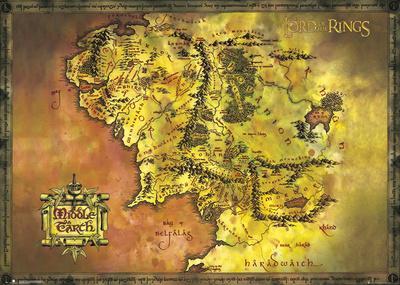Similar to Sherlock Holmes, The Lord of the Rings is a modern form of enchantment. The creator of The Lord of the Rings, Tolkien, maintained a brilliant imaginary world. In Saler’s book As If explains, “While a lavish fantasy, Tolkien’s invented world is also rigorously rational. It is genealogical charts, detailed chronologies, and appendices, and scholarly discussions about nomenclature, geography, history, and languages encourage the reader to approach Middle-earth analytically as well as imaginatively” (Saler, 2012, p. 159). 
The Lord of the Rings shows enchantments of myths and sagas, “It is a traditional epic of mighty heroes vying with supernatural foes, but also one of the everyday individuals confronting existential choices” (Saler, 2012, p. 159). For Tolkien the re-enchantment is the Secondary Worlds that are not modernity; instead, the “modern” part shows the narratives and the complexity of the plot, its meaning, and create a better experience for enchantment.
In Transmedia Storytelling, when people dwell in their world, they have a longing for a new world that is completely unintelligible. Within imaginary worlds people can discover ways to relate to the world, “by cross-dwelling in another world, a visitor could benefit from the perspectives and practices that she might not find in the context of her world” (Saler, 2012, p. 161). The imaginary world Tolkien created has heroism and self-sacrifice. As If explains how the organizations are unlikely to be public spheres of imagination; “given their professed beliefs, it is difficult to imagine that they permitted free discussions conducted on the principles of equality, rationality, tolerance, and mutual respect” (Saler, 2012, p. 162).
However, Tolkien would take his unfinished work and read it to the Oxford community gatherings. These gatherings are a great example of Habermas’ public sphere. The community was put into a world creation. Tolkien’s views, “expressed the tension between the ironic acceptance of Secondary Worlds and the tenacious hold of essentialist narratives concerning the Primary World” (Saler, 2012, p. 162).
Tolkien believed that all stories were correct and that every human were “sub-creators.” Tolkien was able to see the world in an “as if” perspective and had faith in stories that were “just so.” While Tolkien “based his theory of Secondary Belief in Secondary Worlds on a metaphysical foundation, it proved conducive to an outlook suspicious of foundations and essences” (Saler, 2012, p. 164). Modern enchantment creates a path between delight and delusion and “acknowledges the siren call of the ‘just so’ even as it cleaves to the slippery slopes of the ‘as if'” (Saler, 2012, p. 164). His attitude towards religion and fiction is defined as a conflict in Western thought. Tolkien’s main focus was to take the imaginary world of Middle-earth and put the importance of fantasy in that world.

